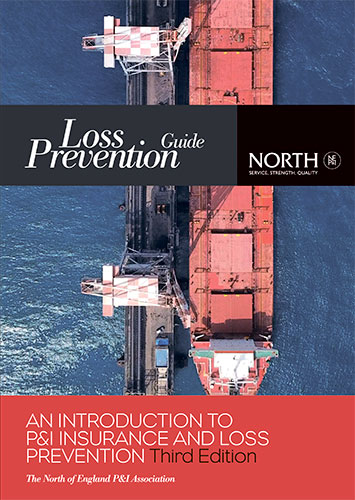An introduction to P&I insurance and loss prevention/Введение в страхование P&I и предотвращение убытков
Книга на английском языке
Ship’s masters, officers and those working within the shipping industry will be well aware that unforeseen incidents can and do occur. Fortunately, most of these incidents are minor and do not result in a claim against the ship or have repercussions. However, sometimes they can be more serious, and it is for the liabilities arising from these incidents that marine insurance, including protection and indemnity (P&I) insurance, is provided.
This chapter examines the development of marine insurance leading to the formation of P&I clubs and gives an overview of P&I clubs, including how they work with correspondents to provide a worldwide service. It also looks at the role of the International Group of P&I Clubs (subsequently referred to as the International Group or ‘IG’).
Firstly, it is important to understand the insurance requirements of a ship operator and how P&I clubs provide an important component of that insurance.
Contents
1. Introduction to P&I clubs
Ship operators’ insurance requirements
History of marine insurance
Mutual P&I clubs today
International Group of P&I Clubs
Insurance not provided by International Group P&I Clubs
Advantages of mutual P&I clubs
P&I correspondents
Summary
2. P&I underwriting
Premium income
Types of premium
Policy year
Loss ratio
Abatement
Reinsurance
Reserves
Entering ships in a P&I club
Summary
3. P&I and loss prevention
Need for loss prevention
Reactive approach to loss prevention
Proactive approach to loss prevention
P&I clubs and loss prevention
Summary
4. P&I principles and rules
Underlying principles of P&I
General rules governing P&I insurance
Major categories of risk covered by P&I
Summary
5. P&I insurance for people
International health and safety legislation
Domestic health and safety legislation
Personal injury and illness
P&I cover for ship’s crew
P&I cover for supernumeraries
P&I cover for passengers
P&I cover for third parties
Loss prevention for crew, passengers and third parties
Stowaways
Persons in distress
P&I cover for stowaways and persons in distress
Loss prevention for stowaways and persons in distress
Diversion and deviation
P&I cover for diversion and deviation
Loss prevention for diversion and deviation
Summary
6. P&I insurance for cargo
International trade
International conventions relating to the carriage of goods at sea
Charterparties and chartering
Charterparty forms
Relationship between the charterparty and bill of lading
Time charterparties
Voyage charterparties
Charterparty problems
P&I cover for cargo
Loss prevention for cargo
Summary
7. P&I insurance for ships
Collisions
Insurance cover for collisions
Loss prevention for collisions
General average and salvage
Insurance cover for general average and salvage
Damage to third-party property
P&I cover for damage to third-party property
Loss prevention for damage to third-party property
Wreck removal
P&I cover for wreck removal
Towage
P&I cover for towage
Pollution
P&I cover for pollution
Loss prevention for pollution
Summary
8. Other P&I risks, exclusions and discretionary cover
Other risks and liabilities covered by P&I
Exclusions and risks not covered by P&I
Discretionary nature of P&I insurance
Summary
9. P&I claims handling
Advising of the incident
Visitors to the vessel
Responding to the incident
Appointing experts
Establishing contact
Risk of arrest
Evaluating evidence
Submission of claim documents
Settlement negotiations
Possible indemnity claims
Choice of jurisdiction and law
Arbitration
Mediation
Early intervention
Interaction of P&I and H&M insurers
Claims handling following personal injury incidents
Claims handling following collisions
Summary
10. Other types of marine insurance
Hull and machinery insurance
Increased value insurance
Freight, demurrage and defence insurance
War risks insurance
Summary
Index




